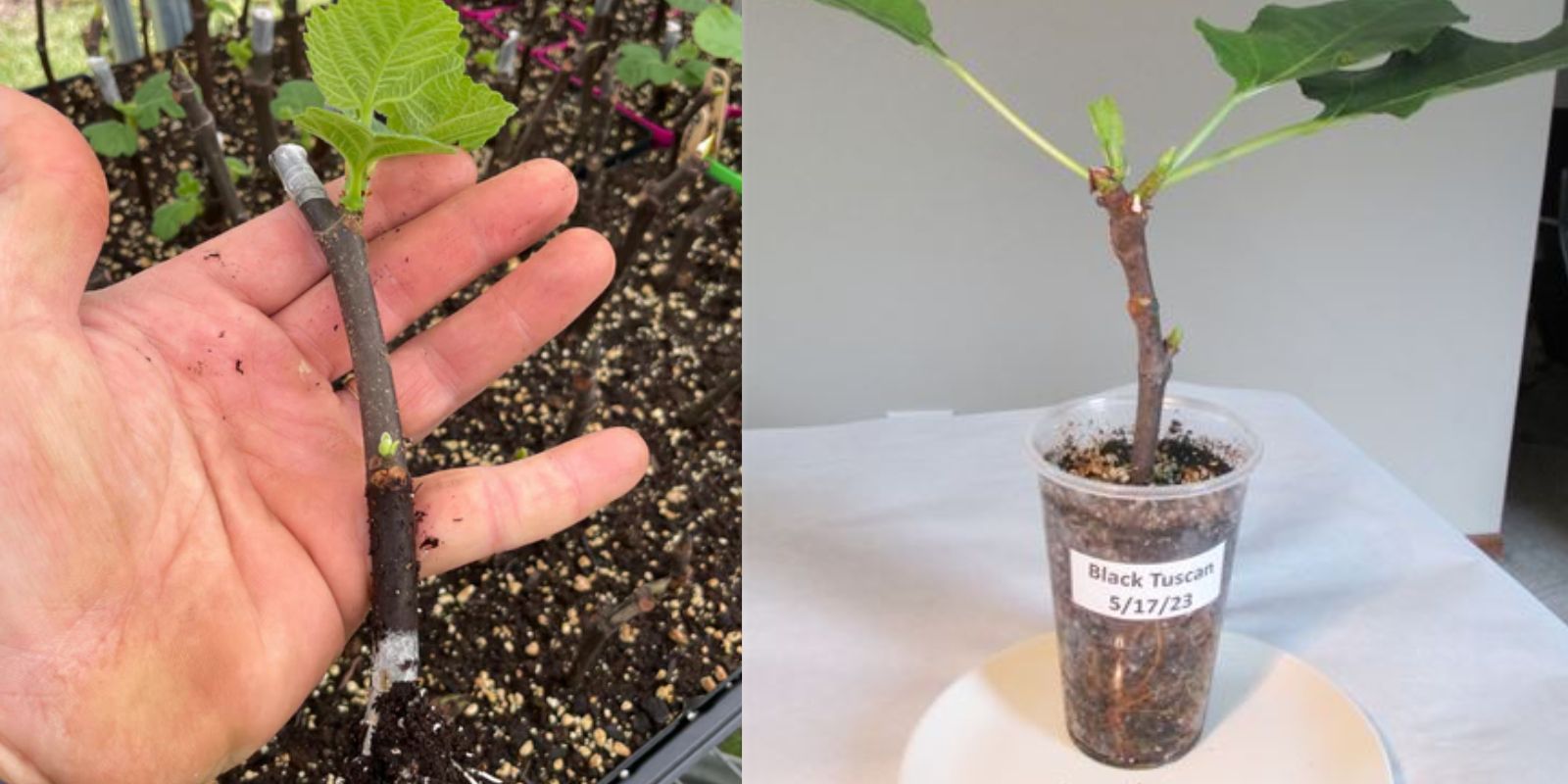Figs are a gardener’s delight, offering luscious fruit and a charming aesthetic to any garden or home. While fig trees can be grown from seeds, propagating them from cuttings is an efficient, cost-effective, and rewarding method. This guide will walk you through the entire process, ensuring you can successfully grow a thriving fig tree from a simple branch.
Why Propagate Figs from Cuttings?
Propagating fig trees from cuttings has several advantages:
- Faster Growth: Unlike growing from seeds, cuttings are pre-matured, ensuring quicker growth and fruit production.
- Genetic Consistency: A cutting will produce a tree that is genetically identical to the parent, guaranteeing the same fruit quality.
- Cost-Effective: You can multiply your fig collection without spending money on new plants.
When to Propagate Fig Trees
The best time to propagate fig cuttings is during the dormant season, typically late fall to early spring. During dormancy, the tree directs its energy toward root development rather than leaf production, giving your cuttings a better chance to thrive.
Materials You’ll Need
- Healthy fig tree for cuttings
- Pruning shears or a sharp knife
- Rooting hormone (optional but helpful)
- Small pots or containers
- Well-draining soil mix (coco coir, sand, and compost work well)
- Clear plastic bags or domes for humidity
- Spray bottle for misting
- Labels (to identify varieties if propagating multiple types)
Step-by-Step Guide to Propagating Fig Cuttings
1. Selecting the Perfect Cutting
Choose a healthy branch from a mature fig tree. The cutting should be about 6-10 inches long, with at least 3-5 nodes (the small bumps where leaves or roots can grow). Older wood is more likely to root than new green growth.
2. Preparing the Cutting
Once you’ve chosen a suitable branch:
- Use clean, sharp pruning shears to make a precise cut.
- Remove any leaves or buds from the lower half of the cutting to focus energy on root formation.
- If available, dip the cut end into rooting hormone to stimulate faster root development.
3. Planting the Cutting
Fill a small pot or container with a well-draining soil mix. Figs thrive in light, airy soil, so a combination of coco coir, sand, and compost is ideal.
- Insert the cutting into the soil, burying at least two nodes beneath the surface.
- Firmly press the soil around the cutting to ensure it’s stable.
4. Maintaining Humidity
Figs root best in a humid environment. Create a mini-greenhouse by covering the cutting with a clear plastic bag or a dome. Ensure the plastic doesn’t touch the cutting directly, as this can cause rot.
5. Watering and Placement
- Lightly water the soil until it’s damp but not soggy.
- Place the pot in a warm spot with indirect sunlight. Direct sun can scorch the cutting, while complete shade might slow down root development.
- Mist the cutting regularly to maintain high humidity levels.
6. Monitoring Growth
Root development usually takes 4-6 weeks. Signs of progress include:
- Resistance when you gently tug the cutting (indicating root growth).
- New leaf buds forming at the nodes.
Transplanting Your Rooted Cutting
Once roots are well-established, it’s time to move your young fig plant to a larger pot or directly into the ground. Follow these steps:
- Choose the Right Spot: If planting outdoors, select a sunny location with well-draining soil. Figs prefer full sun for optimal growth.
- Acclimate the Plant: Gradually expose the cutting to outdoor conditions before transplanting to reduce shock.
- Plant and Water: Dig a hole slightly larger than the root ball, place the cutting in, and backfill with soil. Water thoroughly to help the roots settle.
Caring for Your New Fig Tree
Proper care is crucial to ensure your fig tree grows strong and healthy.
1. Watering
While fig trees are drought-tolerant, young plants need consistent moisture. Water regularly, allowing the topsoil to dry out slightly between waterings.
2. Fertilizing
Feed your fig tree with a balanced fertilizer or compost during the growing season (spring and summer) to promote healthy foliage and fruit production.
3. Pruning
Once your tree is established, prune it during the dormant season to encourage a strong structure and better airflow. Remove dead or overcrowded branches.
4. Pest Management
Figs are relatively pest-resistant, but keep an eye out for common issues like aphids or spider mites. Treat infestations with neem oil or insecticidal soap.
Tips for Success
- Label Your Cuttings: If propagating multiple fig varieties, labeling ensures you can identify them later.
- Patience Pays Off: Some cuttings may take longer to root. Don’t discard them too soon!
- Experiment with Water Propagation: Figs can also root in water. Simply place the cutting in a jar of water, changing it weekly to keep it fresh. Once roots develop, transfer it to soil.
Benefits of Growing Figs from Cuttings
Growing figs from cuttings isn’t just economical; it’s also an eco-friendly way to propagate plants. Plus, it allows you to:
- Share plants with friends and family.
- Preserve heirloom or unique fig varieties.
- Enjoy homegrown figs, which taste far superior to store-bought ones.
Common Mistakes to Avoid
- Overwatering: Too much water can lead to rot. Keep the soil moist but not waterlogged.
- Direct Sunlight: Avoid exposing the cutting to harsh sunlight, which can dry it out.
- Skipping Humidity: Lack of moisture can cause the cutting to wither before roots form.
Conclusion
Propagating fig trees from cuttings is a simple yet immensely rewarding gardening project. Whether you’re a seasoned gardener or a beginner, the process is easy to follow and guarantees a sense of accomplishment. With just a little care and patience, you’ll soon enjoy the fruits of your labor—literally!
🌿 Have you tried propagating figs before? Share your experience and tips in the comments below!
#FigPropagation #GrowFigsAtHome #GardeningTips #HomeGrownFigs #GardenGoals

